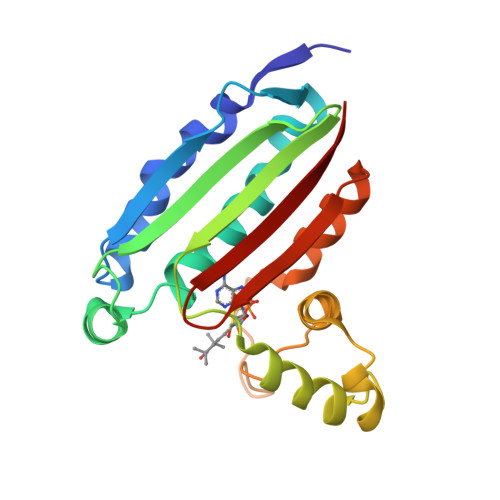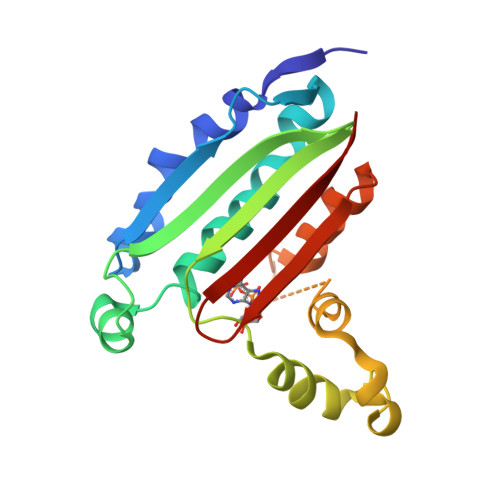Nucleotide Spin Labeling for ESR Spectroscopy of ATP-Binding Proteins.
Muok, A.R., Chua, T.K., Le, H., Crane, B.R.(2018) Appl Magn Reson 49: 1385-1395
- PubMed: 30686862
- DOI: https://doi.org/10.1007/s00723-018-1070-6
- Primary Citation of Related Structures:
6MI6 - PubMed Abstract:
Site-directed spin labeling of proteins by chemical modification of engineered cysteine residues with the molecule MTSSL (1-Oxyl-2,2,5,5-tetramethylpyrroline-3-methyl methanethiosulfonate) has been an invaluable tool for conducting double electron electron resonance (DEER) spectroscopy experiments. However, this method is generally limited to recombinant proteins with a limited number of reactive Cys residues that when modified will not impair protein function. Here we present a method that allows for spin-labeling of protein nucleotide binding sites by adenosine diphosphate (ADP) modified with a nitroxide moiety on the β-phosphate (ADP-β-S-SL). The synthesis of this ADP analog is straightforward and isolation of pure product is readily achieved on a standard reverse-phase high-performance liquid chromatography (HPLC) system. Furthermore, analyses of isolated ADP-β-S-SL by LC-mass spectrometry confirm that the molecule is extremely stable under ambient conditions. The crystal structure of ADP-β-S-SL bound to the ATP pocket of the histidine kinase CheA reveals specific targeting of the probe, whose nitroxide moiety is mobile on the protein surface. Continuous wave and pulsed ESR measurements demonstrate the capability of ADP-β-S-SL to report on active site environment and provide reliable DEER distance constraints.
Organizational Affiliation:
Department of Chemistry and Chemical Biology, Cornell University Ithaca, NY.
























